A built-in wardrobe is a custom designed closet, used as a storage unit, that’s completely integrated into the structure of a room. Instead of free standing closets, such wardrobes are built around your room, using all of the space to their advantage, ensuring that everything looks coordinated and smooth. Perhaps the biggest benefit of a built-in wardrobe is that it optimizes space, perfect for smaller spaces or apartments with less square footage.
In addition to being extremely efficient in space, built-in wardrobes come with several other advantages. They are an effective, aesthetic way to keep your home clear of mess and clutter. With ample room for clothing, shoes, handbags, etc, built-in wardrobes make your home feel neat and peaceful.
Additionally, the wardrobes are an investment that will provide you with longevity and increase the value of your home. Their seamless integration into the architectural structure of your house makes them look elegant and lavish, an appealing feature to renters or purchasers.
- Maximizing storage in a small space
- Customizing your built-in wardrobe
- Choosing the right materials for your built-in wardrobe
- Design ideas for a built-in wardrobe
- Organizing your clothes and accessories in a built-in wardrobe
- Maintenance and care for your built-in wardrobe
- Hiring a professional for your built-in wardrobe installation
- Cost considerations for a built-in wardrobe
- Conclusion
Maximizing storage in a small space
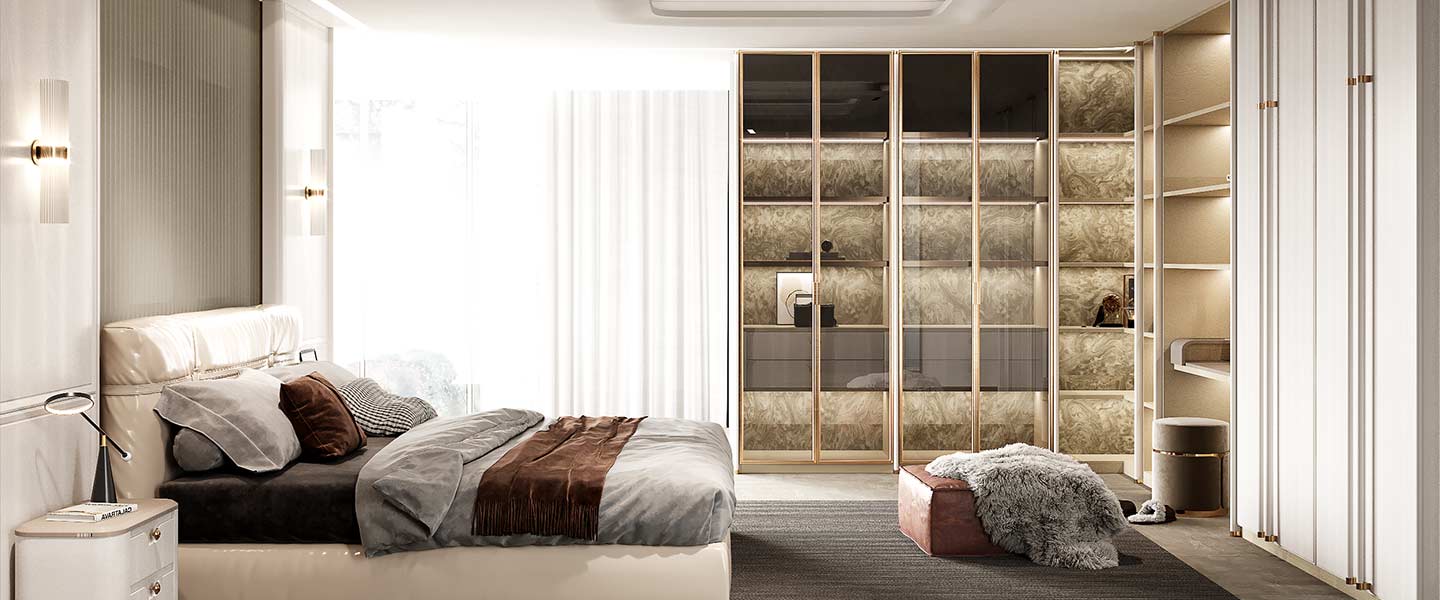
Built-in wardrobes are second to none when it comes to creating more storage space in less space. There are many corner-to-corner spaces in their personalized design where no square inch will be wasted. These closets can house loads of clothes, shoes, and accessories with creative storage designs such as pull-out racks, adjustable shelves, and rods.
For instance, to maximize storage space, vertical space is another idea that works. Ceiling-to-ceiling tall cabinets or shelves will offer more storage space without stealing valuable floor space. The addition of drawers or baskets in the design also helps you keep small things like socks, underwear, and accessories away while keeping them close and handy.
An alternative space-saving approach is to integrate sliding doors or mirrored panels into the wardrobe. Sliding doors free you from swing space so you can access the entire closet without interrupting the flow of the room. Mirrored panels, however, give the impression of an extension but also function as a dressing or grooming surface.
Customizing your built-in wardrobe
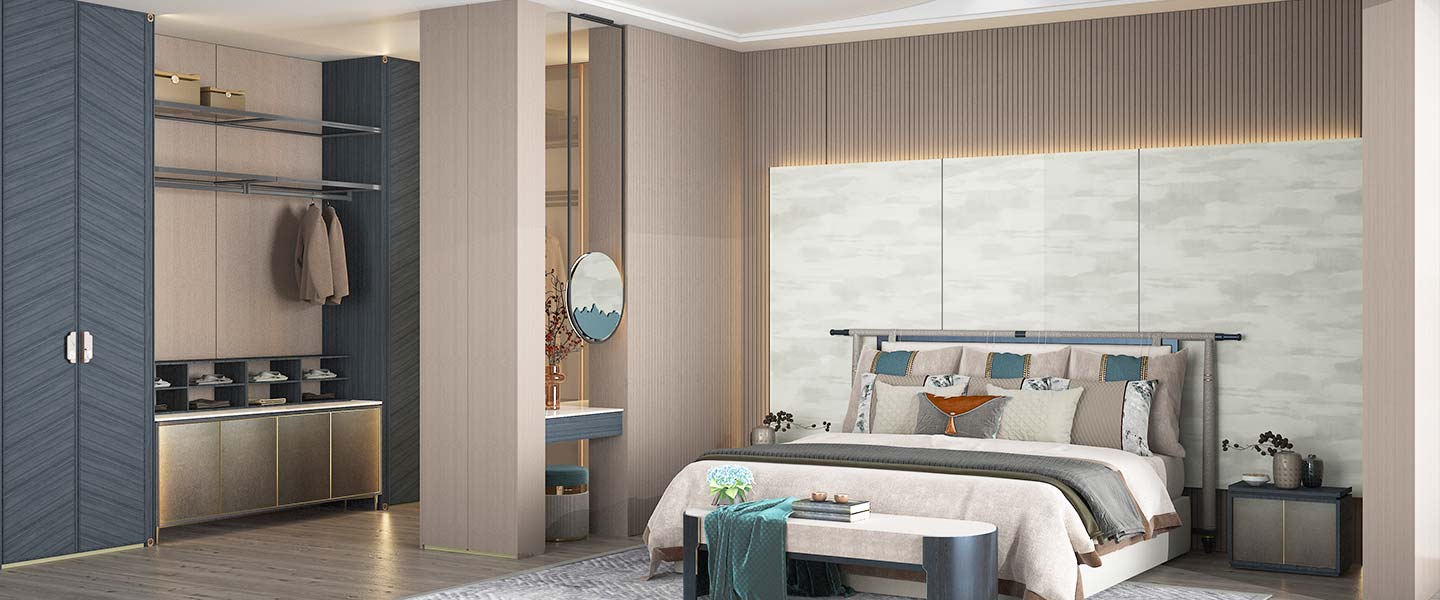
And the greatest part of having a built-in wardrobe is that you can make it to your own requirements and needs. So, whether you are a fan of the latest designer handbags, the world’s biggest shoe collection, or love to dress in colours or seasonally, a personalized wardrobe will cover all of your needs.
You can speak with a professional during the design process to determine the optimal layout, shelving kinds, and storage alternatives for your needs. This is an individually tailored style that makes your wardrobe work for you and caters to you, as a truly customized touch to your home.
Choosing the right materials for your built-in wardrobe
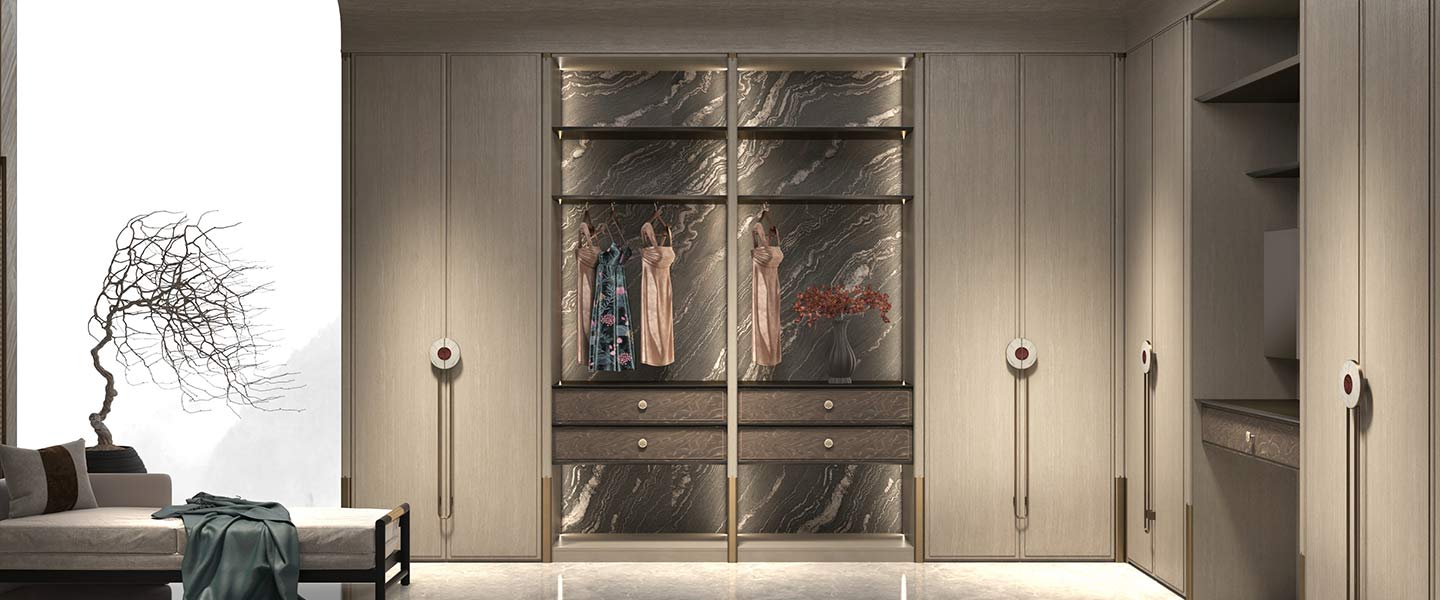
With built-in wardrobes, the materials you use are just as important in how attractive and robust your finished product will be. Popular choices include wood, laminate, and melamine, which each have their own benefits and features.
Oak, maple or cherry wood is warm and natural and offers a long lifespan. Laminate, on the other hand, is an affordable alternative that provides the look of wood and is scratch and water resistant. Laminates like melamine are another favorite because they come with a nice, seamless surface and are easy to maintain.
In addition to these raw materials, you can add touches and hardware to make your built-in wardrobe look and function even better. Glass doors or panels will give you an open space and easy access to all of your items while metal or wooden handles and knobs can give your space some style and character.
Design ideas for a built-in wardrobe
The options are limitless when creating a built-in wardrobe. From sleek and modern to rustic and traditional, the style of your wardrobe will blend well with the rest of your space.
- Minimalist and Modern: Try to use clean lines, neutral colours, and minimal hardware for a clean and sleek appearance. You can incorporate open shelving and rods for lightness and simplicity.
- Classic and Warm: Use a nice wood color like oak or walnut and shiplap or reclaimed wood for a rustic, farmhouse vibe. Wear antique hardware for the classic look.
- Splendid and Flush: Choose the material like velvet or mirrored panels for extra lux. Add in LED lighting and chic hardware for an ultra-chic effect.
- Untraditional and Bohemian: Mix and match different fabrics, prints, and textures for an untraditional style. Try adding woven baskets or macramé as a boho touch.
- Industrial and edgy: Add brick, metallic details, and raw elements to make your home look industrial. Install sliding barn doors or open shelves to create an airy loft-like effect.
Organizing your clothes and accessories in a built-in wardrobe
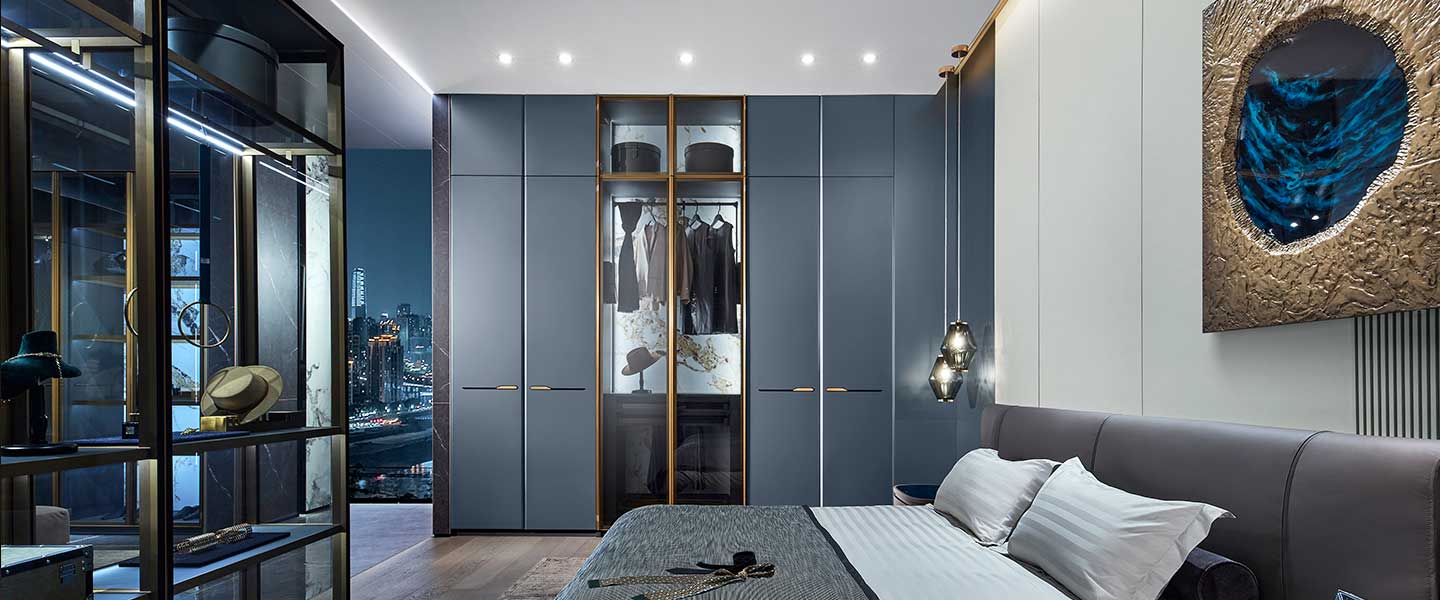
An excellent built-in wardrobe is not only beautiful but also useful and spacious. Organizing your closet correctly is essential to the extent that you are able to maximize the storage capacity of your wardrobe and make sure that everything is at hand and organized.
- Sort by category: Organize your clothes, shoes and accessories first into tops, bottoms, dresses, outerwear, and accessories. This will allow you to decide how to organize things for each category and put everything in a particular spot.
- Embrace vertical space: Utilize vertical space in your closet by installing hanging rods at varying heights for long and short clothes. You can even put pull-out shelves or racks for rolled up sweaters or jeans.
- Using drawer organizers: Purchase drawer organizers or dividers to keep the small things (socks, underwear, jewelry) separated and easily visible.
- Clear storage containers: Clear storage containers or baskets can help you quickly check what’s in them, without opening each one to search for what you’re looking for.
- Identify and label: Label shelves, drawers or hangers to allow you to quickly find specific objects. You can even sort your outfits by color, season or event to save time.
Maintenance and care for your built-in wardrobe
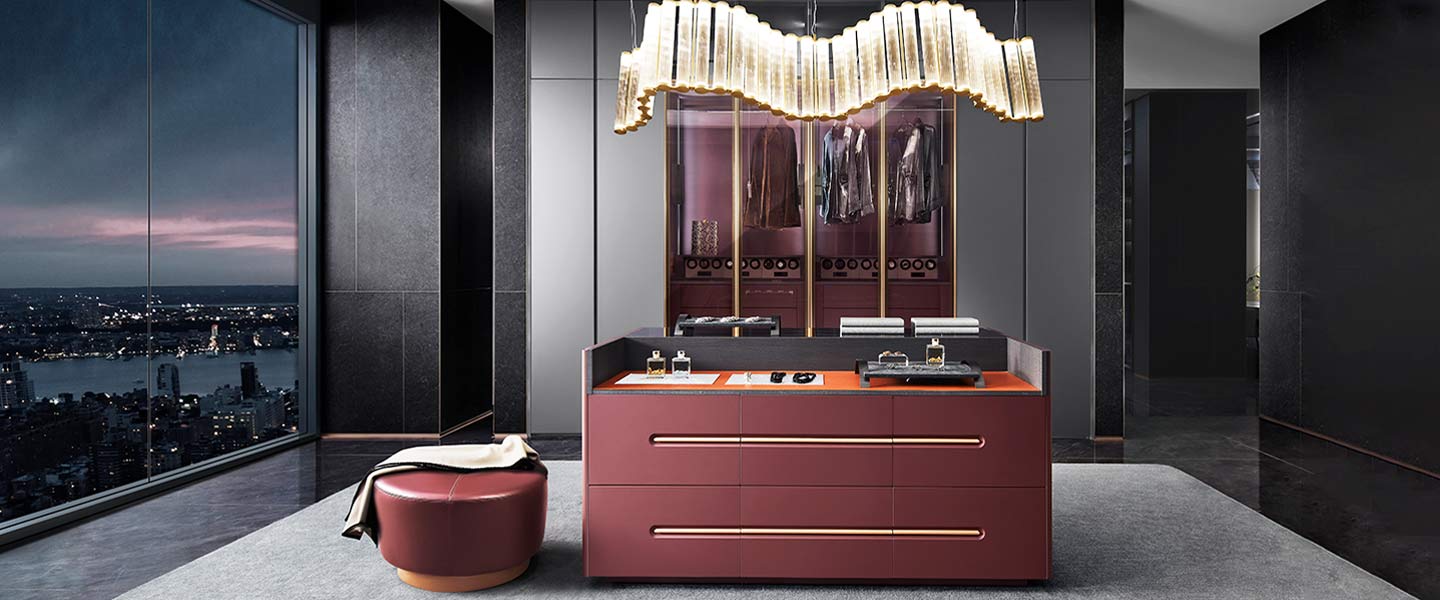
It’s critical to maintain and look after your built-in wardrobe in order for it to perform at a high level. Cleaning and maintenance at regular intervals will maintain the look of your clothing and eliminate all risk of mold, mildew, moisture or infestation.
- Regular clean and dust: Dust and dirt off of your clothes using a clean soft cloth or microfiber duster. To scrub it, apply a mild soap and water solution or an exfoliating wood cleaner, depending on the finish.
- Keep away from moisture: Wardrobes, especially wooden ones, are susceptible to the effects of moisture. Apply a dehumidifier or silica gel bags to keep humidity at bay and prevent warping or mold.
- Rotate Seasonal pieces: Rotate seasonal pieces into and out of your closet to prolong the life of your clothes and accessories. To protect off-season products from dust and humidity, store them in sealed or plastic bags.
- Pests: Regularly look in your wardrobe to check for the presence of insects like moths or silverfish that can ruin your clothing and the wardrobe itself. Apply natural repellents or call a professional.
- Lubricate the moving parts: If your built-in wardrobe has sliding doors or drawers, make sure to lubricate the moving parts from time to time to maintain the smooth movement and minimize damage.
Hiring a professional for your built-in wardrobe installation
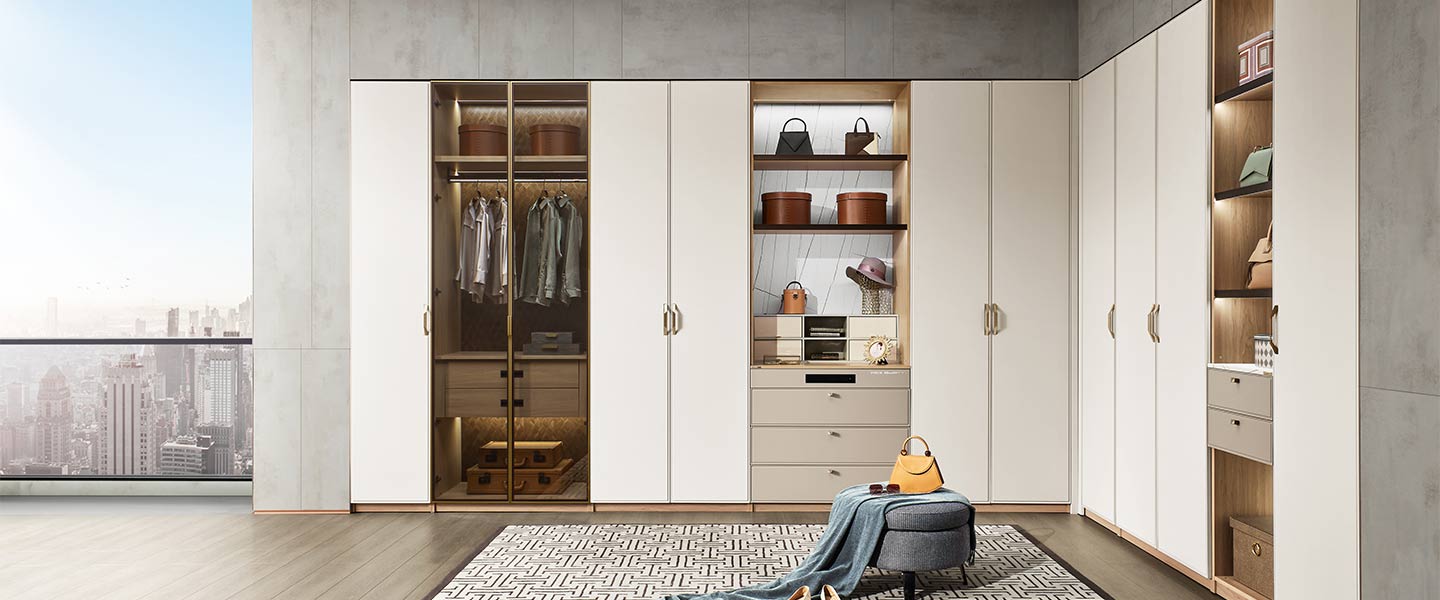
Although the handy homemaker might want to make the built-in wardrobe as a DIY project, you are probably best to leave that to a professional. : The professional carpenter or wardrobe manufacturer can make sure your wardrobe is properly assembled, leveled, and attached to the wall or floor, without having future troubles or risks to your safety.
Installation specialists can handle the specific nuances of building built-in wardrobes: exact measurements, custom fitting, integration with other architectural features, etc. Also, they can give useful tips for material, style, and utility, so that your closet meets your personal needs and tastes.
So before selecting an expert, it is very important to investigate and verify contractors carefully. Try to find professional people or companies who have successfully built-in wardrobe installations. Call for references, see portfolios, check to make sure they’re licensed and insured so you don’t lose your money.
Cost considerations for a built-in wardrobe
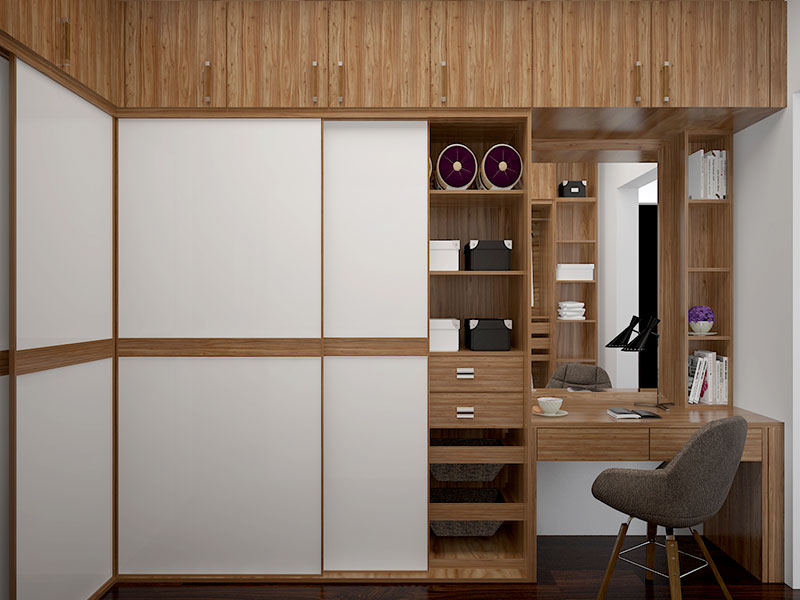
Building a built-in wardrobe can be quite expensive, depending on various elements such as size, materials, design and cost of labor. While a custom-made wardrobe may be more expensive than a freestanding model, you have to think long-term and consider what it will add to your home’s value.
- Materials: The materials you use for your built-in wardrobe will significantly determine the cost. It’ll cost more in premium materials such as solid wood or specialty finishes than laminate or melamine.
- Large and sophisticated: Bigger wardrobes, and wardrobes with elaborate configurations like curved or angled walls are going to cost more as there’ll be more work and materials involved.
- Optional add-ons: Other options, such as pull-out racks, specialized lighting, or recessed dressing compartments, will increase the price, but will also make your wardrobe more functional and attractive.
- Cost of labor: If you are looking to hire a professional carpenter or cabinet maker, it depends on their experience, where you are located, and how complicated the job is.
In order to stay within your means, you need to plan out exactly what you want and inform the expert that you engage about what you are looking for in terms of features and materials. They can also offer accurate cost estimates and other alternatives or design modifications to get you your desired result while limiting your budget.
Conclusion
A built-in wardrobe can be used for both functional and fashion-forward storage in almost any room of your home, increasing efficiency and making your space feel luxurious. Whether it’s a small space or a walk-in closet, your wardrobe can be designed to meet your specific demands, maximizing every nook and cranny.
Having a grasp on what the built-in wardrobes have to offer, what they can be designed with, and how they must be maintained will help you make a space-efficient and beautiful storage unit that will not only provide you extra space but also sell your home for value.
If you’re willing to take the first step towards making use of every bit of storage and having a clean, clutter-free home, you might want to think about getting an adjustable wardrobe built. We are dedicated professionals who will help you in all aspects of design to install. Contact us now for a free consultation and let us tailor your wardrobe.
OPPEIN is looking for global cabinet franchisees, visit our dealership page for more information if interested.
